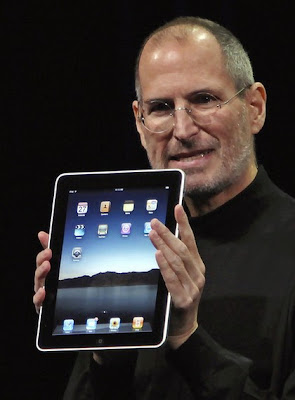 Sony Ericsson Vivaz, a smart phone in vogue.
Sony Ericsson Vivaz, a smart phone in vogue.9 Mar 2010 11:30 Africa/Lagos
Laptops and Smart Phones - the Most Common Mobile Computing Products Used by CXOs in Europe, Finds Frost & Sullivan
LONDON, March 9, 2010/PRNewswire/ --
Laptops and smart phones are the mobile computing products most commonly used by European chief executive officers (CXOs). However, web-based collaboration tools, valuable particularly for business travel, are gradually gaining importance. Mobile-based applications, both location-based and multimedia contents, are relatively new concepts offering significant potential for service providers.
(Logo: http://www.newscom.com/cgi-bin/prnh/20081117/FSLOGO)
New analysis from Frost & Sullivan (http://www.wireless.frost.com), 2009 European CXOs' Choice: Computing Products and Services, finds that the European CXOs expect the mobile communication as well as the computing products and services they use to be utilitarian rather than full of frills.
"Of the various mobile communication and computing products and services, all European CXOs surveyed in this research use or own laptops/notebooks," says Frost & Sullivan Research Manager Krishnendu Roy. "They perceive reliability as the core function of their laptop/notebook with all other features being secondary."
Smart phone ownership increased dramatically from 2008 to 2009, with the number of European CXOs now owning a smart phone doubling. This significant increase has directly affected standard feature phone ownership rates. Nearly all European CXOs perceive smart phones to be strictly business phones, while standard feature phones are seen as personal use phones. In either case, battery life and ease of use are perceived as the most important features.
"Overall, among those using web-based collaboration tools, 70 percent consider ease-of-use as the most important feature," concludes Roy. "Interestingly, having a powerful feature set is least important to European CXOs as few of them use mobile multimedia content applications or mobile location based applications."
If you are interested more information on this study, please send an e-mail to Joanna Lewandowska, Corporate Communications, at joanna.lewandowska@frost.com, with your full name, company name, title, telephone number, company e-mail address, company website, city, state and country.
2009 European CXOs' Choice: Computing Products and Services is part of the Mobile & Wireless Growth Partnership Services programme, which also includes research in the following markets: Mobile Payments Markets, The Evolution of Mobile Location Based Services in Europe, Mobile Communications Markets in Eastern Europe, Mobile Communications Outlook, European Mobile Broadband - Melee between Mobile WiMAX and 3G LTE. All research services included in subscriptions provide detailed market opportunities and industry trends that have been evaluated following extensive interviews with market participants.
About Frost & Sullivan
Frost & Sullivan, the Growth Partnership Company, enables clients to accelerate growth and achieve best-in-class positions in growth, innovation and leadership. The company's Growth Partnership Service provides the CEO and the CEO's Growth Team with disciplined research and best-practice models to drive the generation, evaluation, and implementation of powerful growth strategies. Frost & Sullivan leverages over 45 years of experience in partnering with Global 1000 companies, emerging businesses and the investment community from 40 offices on six continents. To join our Growth Partnership, please visit http://www.frost.com.
2009 European CXOs' Choice: Computing Products and Services
M482-65
Contact:
Joanna Lewandowska
Corporate Communications - Europe
P: +48-22-390-41-46
E: joanna.lewandowska@frost.com
http://www.frost.com
Source: Frost & Sullivan
Joanna Lewandowska, Frost & Sullivan Corporate Communications - Europe, +48-22-390-41-46, joanna.lewandowska@frost.com
Hot Topics
Bankrate Releases 2010 Retirement Guide
CFOs Report on Second-Quarter Hiring Expectations; Survey Finds Most Executives Confident They Will See Business Growth Next Quarter
2010 Retirement Confidence Survey: Americans' Confidence Stabilizing, But Preparations for Retirement Continue to Erode
Lady Gaga's Epic New Video for 'Telephone' Featuring Beyonce to Make Its Worldwide Debut Exclusively on E! News Thursday, March 11 at 11:30PM
Global Manpower Employment Outlook Survey Reveals Optimism as Most Major Labor Markets Expect to Hire in 2Q at Equal or Stronger Pace as Same Time Last Year
Online Games Casually on Target for Huge Growth & Profits in 2010
Earthquake in Chile
Entertainment Awards Season










